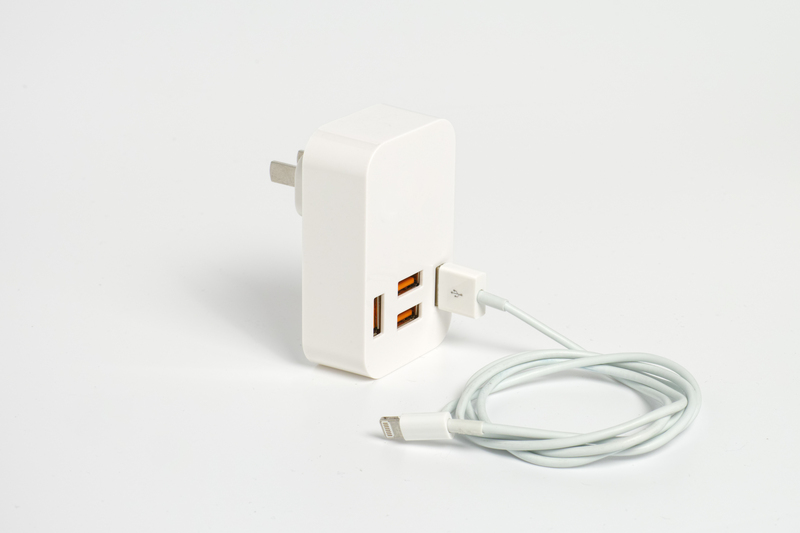Smooth and Stress-Free House Moving Strategies
Posted on 31/05/2025
Smooth and Stress-Free House Moving Strategies
Moving house can be one of life's most overwhelming endeavors, but with the right guidelines and strategic planning, it's possible to enjoy a seamless and even exciting transition. Whether you're moving to a new city or simply relocating within your town, having an effective plan is the essential key to a smooth and stress-free move.
In this comprehensive guide, we'll cover top house moving strategies to minimize stress, maximize efficiency, and help you transition into your new home with ease. Say goodbye to chaos and hello to organized relocation!
Why Planning Is Essential for a Smooth Move
Many people underestimate the importance of thorough planning when it comes to home relocation. Proper preparation transforms a potentially chaotic process into a streamlined experience. A well-crafted moving plan can help you:
- Prevent last-minute mishaps
- Save time and money
- Keep your belongings safe and organized
- Reduce stress and anxiety
- Ensure nothing is forgotten
Let's dive into the top strategies that promise a hassle-free and effective house move.

Kick-Start the Process Early
Why Early Preparation Matters
The earlier you begin preparing for your move, the easier it will be to avoid common pitfalls. Start at least six to eight weeks in advance. This timeframe gives you enough leeway to tackle the numerous tasks associated with residential moving without feeling rushed.
Early preparation helps you:
- Secure the best moving company
- Gather necessary packing materials
- Sort and declutter your possessions systematically
- Manage paperwork and address changes consultation
- Notify important parties and service providers of your move
Develop a Comprehensive Moving Checklist
The Power of an Organized List
A detailed moving checklist acts as your roadmap for a trouble-free house relocation. It keeps you on track and ensures you don't overlook critical steps. Here's how to build one:
- Sort and purge belongings: Go room by room and categorize items to keep, donate, sell, or discard.
- List moving tasks by week: Break down major milestones into manageable weekly tasks.
- Document inventory: Create an itemized inventory to track boxes and valuables.
- Contact movers or truck rentals: Book your preferred dates as early as possible.
- Notify utility companies and update addresses: Schedule service transfers or cancellations.
- Gather supplies: Stock up on boxes, bubble wrap, tape, markers, and specialty containers.
Make use of digital checklists or apps like Google Keep, Evernote, or moving apps designed specifically for household moves.
Master the Art of Decluttering Before You Pack
Why Less is More When Moving
One golden rule of efficient and smooth house moving is to carry only what you truly need. The fewer items you have, the quicker and cheaper your move will be. Before you start packing, devote time to decluttering:
- Sift through every room: Evaluate clothes, books, appliances, and decor.
- Set aside items for donation or sale: Use local charities, garage sales, or online marketplaces.
- Dispose of unnecessary or broken items responsibly: Check local recycling centers or bulk trash days.
Decluttering lightens loads, reduces transport costs, and ensures your new home is free from unnecessary clutter. You'll start fresh, organized, and motivated.
Packing Like a Pro: Tips for Organized and Safe Packing
Effective Packing Strategies
Packing isn't merely about placing items in boxes. It's an art and science that, when done right, protects your possessions and streamlines the unpacking process. Here's how to ace your packing routine:
- Use sturdy, uniform boxes: They stack more efficiently and protect contents.
- Label each box clearly: Indicate room, contents, and if it's fragile. Numbering boxes helps cross-reference with your inventory.
- Pack heavier items in small boxes: Think books, tools, and canned goods.
- Fill gaps with packing paper or towels: Prevents shifting and breakages.
- Wrap fragile items individually: Use bubble wrap or soft clothing for cushioning.
- Seal liquids and powders carefully: Place in sealed bags to prevent leaks.
Packing Room by Room
Rather than scattering your efforts, tackle one room at a time. This approach maintains order and prevents items from being mixed up. Finish packing each area before moving on to the next. Store boxes by room for easy loading and unpacking.
Choose the Right Moving Help
Professional Movers vs DIY Move
Decide early if you'll employ a professional moving company or opt for a DIY move. Both have distinct benefits:
- Professional movers: They bring expertise, equipment, and insurance. Perfect for complex moves or long-distance relocations.
- DIY moving: Offers savings and flexibility, best for short distances or smaller loads. Consider renting a truck or enlisting friends and family.
When hiring movers, thoroughly research reviews, confirm credentials, and request multiple quotes. For DIY moves, reserve vehicles early and ensure you have the right help and equipment.
Questions to Ask Your Moving Company
- What is your policy on damages or lost items?
- Are all costs included in the quote?
- Do you provide packing or unpacking services?
- How do you handle large or fragile items?
- Are your movers licensed and insured?
Prepare a Moving Day Survival Kit
What You'll Need on Moving Day
The day you move requires thoughtful preparation. Prepare a Moving Day Essentials Kit containing:
- Important documents (IDs, lease, contracts)
- Chargers, phone, and emergency contacts
- Medications and first-aid kit
- Change of clothes and toiletries
- Snacks and drinks
- Toys or comfort items for kids and pets
- Essential tools (scissors, screwdrivers, duct tape)
This grab-and-go kit ensures comfort and addresses urgent needs when the rest of your belongings are packed away.
Smart Strategies for a Stress-Free Move With Kids and Pets
Moving With Family: Minimizing Disruption
Children and pets can find moving particularly stressful. Maintain normal routines as much as possible and keep them involved. Assign simple tasks to kids and communicate openly about what to expect. For pets, prepare a quiet space and maintain familiar items (toys, bedding) close by. Schedule travel plans that minimize discomfort and confusion.
Get to Know Your New Neighborhood Before You Move
Smoothing the Transition
Take time in advance to explore your new community. Identify important amenities, schools, healthcare facilities, stores, parks, and public transportation. If possible, meet future neighbors and get acquainted with the local regulations. This familiarity will ease the transition and help your family feel at home quickly.
Final Cleaning and Inspection: Leave No Loose Ends
Don't Forget Your Old Place
A comprehensive cleaning and inspection of your previous home is vital--both for securing rental deposits and maintaining strong relationships with new owners or landlords. Check every nook and cranny for overlooked items, marks, or cleaning needs.
- Empty and clean all appliances
- Repair small damages or fill nail holes
- Dispose of trash and recycling properly
- Take photos documenting the condition for records
Efficient Unpacking: Settling Smoothly Into Your New Home
Unboxing With Purpose
You've made it to your new residence -- now comes the rewarding process of settling in. To ensure a stress-free start in your new home, stick to your plan:
- Begin with necessities: Set up beds, bathroom essentials, and kitchen basics first.
- Follow your labeled boxes and inventory: Unpack each room in priority order.
- Take your time to organize: Avoid rushing; carefully decide where everything belongs for maximum functionality.
- Celebrate small wins: Every room you finish is an accomplishment!
Common Moving Mistakes to Avoid
- Underestimating time needed for packing and cleaning
- Failing to label boxes clearly and specifically
- Neglecting to update critical addresses (banks, postal services, subscriptions)
- Forgetting to check insurance for transit coverage
- Not retaining important documents during the transition
- Trying to do everything without help
Avoiding these missteps is central to a successful, stress-free house move.

Bonus: Eco-Friendly House Moving Tips
The moving process can generate substantial waste. To make your move more environmentally friendly, consider these steps:
- Use reusable bins and containers
- Source well-maintained secondhand boxes
- Recycle or responsibly dispose of packing materials
- Donate items instead of discarding them
- Choose moving companies with sustainable practices
Summary: Enjoying a Calm, Organized Move
While house moving will always involve some level of effort, following these smooth and stress-free house moving strategies sets the stage for a successful, organized, and enjoyable transition to your new home. Remember to start early, plan each detail, declutter, and enlist the right help.
- Set up a detailed moving plan and checklist
- Organize and minimize your belongings
- Pack carefully and with labeling precision
- Address the needs of family and pets
- Stay eco-conscious during the process
- Unpack methodically and celebrate your achievement
With these optimized strategies, your house move can truly be stress-free and smooth. Here's to turning a potentially overwhelming event into a fresh, exhilarating beginning in your new home!



